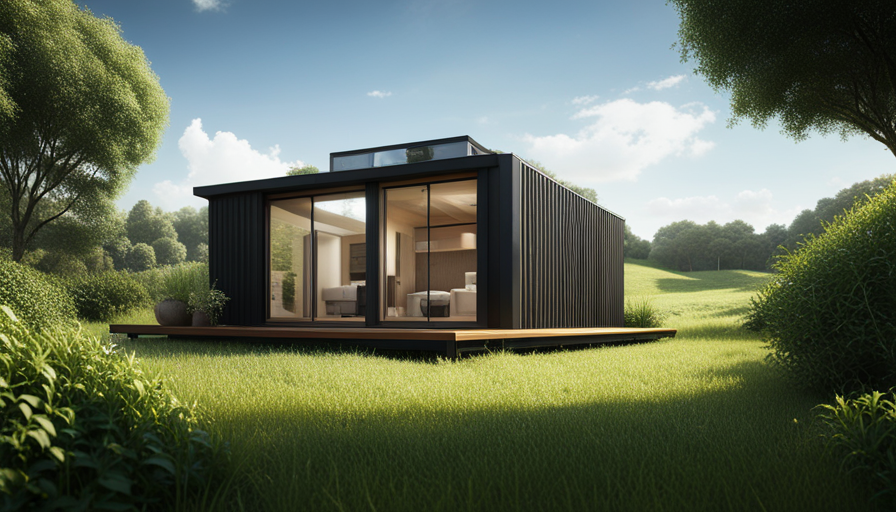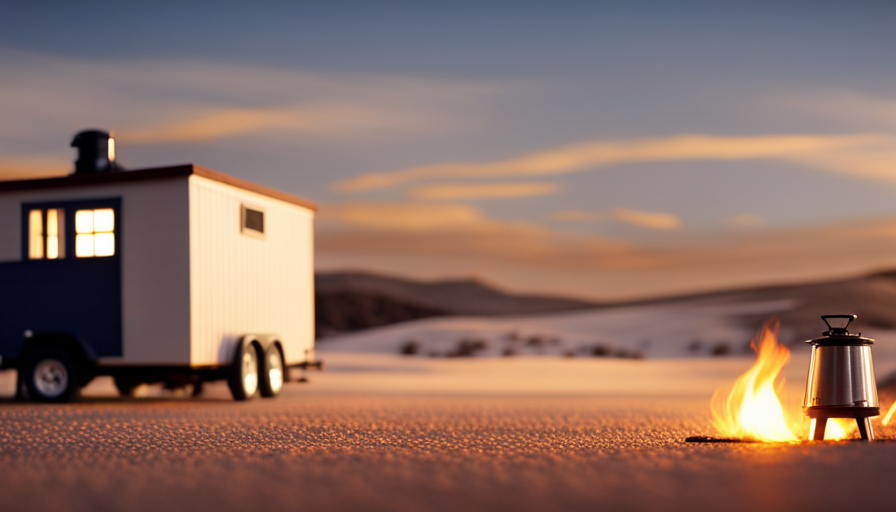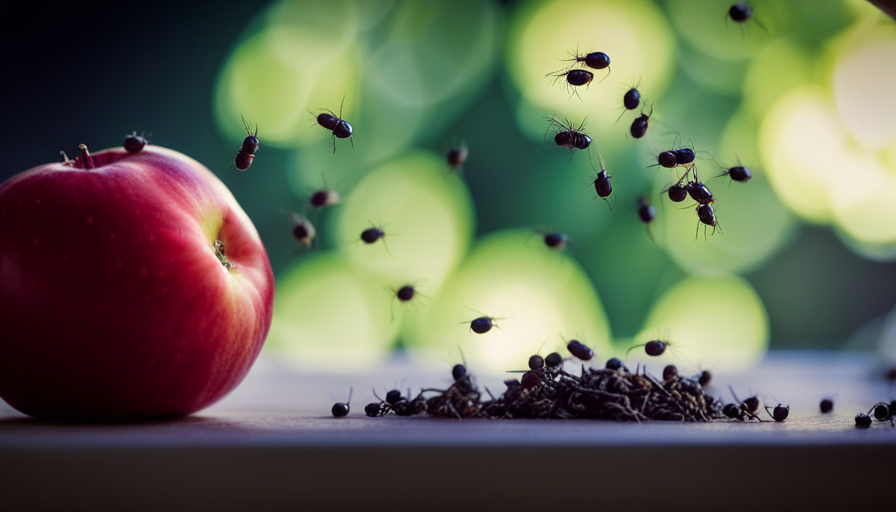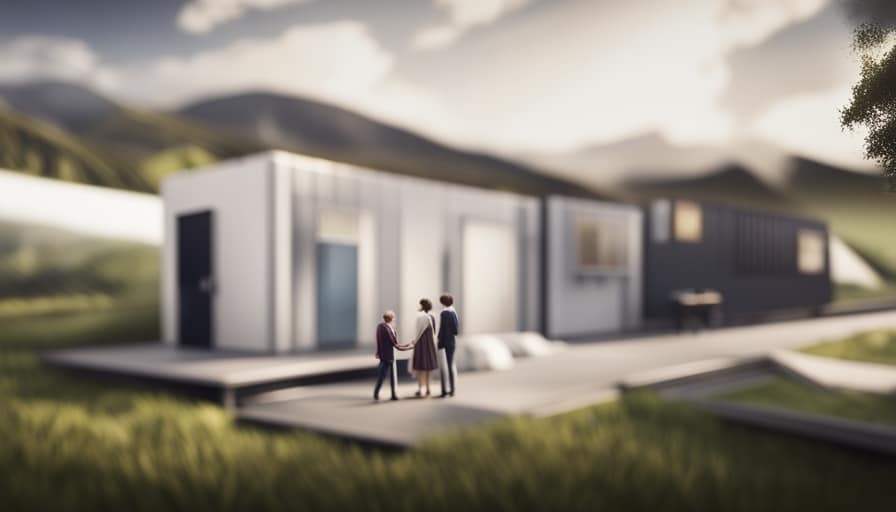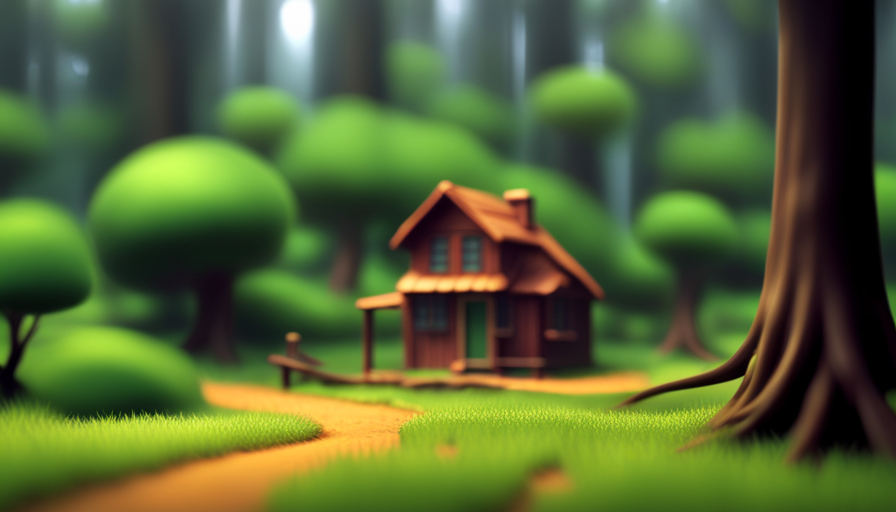As I gaze at the long stretch of road ahead of me, I can’t help but wonder: what is the biggest tiny house that my trustworthy car can pull? The thought of traveling as a nomad with a cozy home in tow fills me with a sense of freedom and anticipation. But before I set off on this exhilarating journey, it’s crucial for me to understand the capabilities of my car.
In this article, we will explore the factors that determine the size of a tiny house that can be safely towed by a car. From understanding towing capacity and considering weight to assessing road conditions and legal requirements, we will delve into every aspect to ensure a smooth and enjoyable experience on the road.
So, buckle up and join me on this exploration, as we uncover the perfect match between car and tiny house for an unforgettable adventure.
Key Takeaways
- The size of a tiny house that can be towed by a car depends on factors such as towing capacity, weight limitations, and the car’s towing capacity in relation to the weight of the tiny house.
- It is important to consider additional weight considerations for belongings and supplies when determining the size of a tiny house that can be towed by a car.
- Efficient packing and organizing of belongings is crucial, including prioritizing essential items, utilizing multi-purpose items, and packing tightly to distribute weight evenly.
- Safety should be a top priority, considering parking regulations, road conditions, and choosing the right towing vehicle. Safe driving techniques and regular checks of tires, brakes, and trailer connections are also essential.
Know Your Car’s Towing Capacity
So, before you start dreaming about that adorable tiny house on wheels, it’s crucial to know your car’s towing capacity. Understanding your car’s ability to tow is essential for a safe and enjoyable journey.
When it comes to car towing capacity, there are weight limitations that you need to consider. Car towing capacity refers to the maximum weight that your car can safely tow. It is important to note that every car has a different towing capacity, and exceeding this limit can lead to serious safety hazards.
To determine your car’s towing capacity, you can refer to the owner’s manual or contact the manufacturer. They will provide you with the specific details regarding your car’s towing capabilities.
Once you know your car’s towing capacity, you can then consider the weight of the tiny house you plan to tow. It is crucial to ensure that the weight of the tiny house, along with any additional cargo, falls within the limits set by your car’s towing capacity. This will ensure a smooth and safe towing experience.
Considering the weight of the tiny house in relation to your car’s towing capacity is an important step in determining the size of the tiny house you can pull with your car. So, now that you understand your car’s towing capacity, let’s move on to the next section and explore how to consider the weight of the tiny house.
Consider the Weight of the Tiny House
Considering the weight of the tiny house, it is essential to ensure that your car can handle the load. Weight considerations play a crucial role in determining the size of the tiny house you can pull with your car. To help you visualize this, let’s take a look at a table that showcases some popular car models along with their towing capacities:
| Car Model | Towing Capacity (lbs) |
|---|---|
| Car A | 2,000 |
| Car B | 3,500 |
| Car C | 5,000 |
| Car D | 7,000 |
| Car E | 10,000 |
As you can see, different car models have varying towing capacities. It is crucial to know your car’s towing capacity and compare it to the weight of the tiny house you intend to pull. This will ensure that your car can handle the load without straining the engine or compromising safety. Additionally, it’s important to factor in additional weight for belongings and supplies, which will contribute to the overall load your car needs to tow. By considering the weight of the tiny house and your car’s towing capacity, you can make an informed decision about the size of the tiny house that is suitable for your car.
Factor in Additional Weight for Belongings and Supplies
When factoring in additional weight for belongings and supplies, it’s crucial to ensure that your car can handle the load without compromising safety. As you prepare to embark on your tiny house journey, it’s important to consider the weight of your belongings and how they will affect your car’s towing capacity.
Additional weight considerations include not only furniture, appliances, and personal items but also food, water, and other supplies you’ll need for daily living. It’s essential to pack and organize your belongings efficiently to maximize space and minimize weight.
One strategy is to prioritize essential items and avoid overpacking. Consider the size and weight of each item and determine if it’s truly necessary for your tiny house adventure. Utilize multi-purpose items whenever possible to save space and reduce weight. Additionally, packing items tightly and evenly distributing the weight throughout the tiny house will help maintain balance and stability while towing.
As you pack and organize your belongings, keep in mind that your car’s towing capacity will ultimately determine the size and dimensions of the tiny house you can pull.
In the next section, we will explore how to determine the size and dimensions of your tiny house based on your car’s towing capacity.
Determine the Size and Dimensions of the Tiny House
To ensure a smooth and safe towing experience, it’s important to accurately determine the size and dimensions of your dream home on wheels, taking into account your car’s towing capacity. When it comes to towing a tiny house with a car, there are certain towing limitations and parking regulations that need to be considered.
Firstly, you should check your car’s towing capacity and compare it with the weight of the tiny house you plan to tow. This will help you determine the maximum size and weight your car can handle. Keep in mind that exceeding your car’s towing capacity can put unnecessary strain on the engine and other components, leading to potential damage.
Additionally, parking regulations should also be taken into consideration. Some areas have restrictions on where you can park a tiny house on wheels, especially if it exceeds a certain size. It’s important to research and understand these regulations to avoid any legal issues or fines.
Once you have determined the size and weight limitations, you can start looking for a tiny house that fits within your car’s towing capacity. Assessing the road conditions and terrain will be the next crucial step in ensuring a successful towing experience.
Assess the Road Conditions and Terrain
Take a moment to evaluate the road conditions and terrain before embarking on your towing journey with your compact vehicle. Assessing road conditions is crucial to ensure a safe and smooth towing experience. Check for any road obstructions, such as potholes, uneven surfaces, or construction zones that may hinder your progress.
It is also important to consider the width and condition of the roads you will be traveling on. Narrow or winding roads may pose a challenge when towing a tiny house, especially if they’re not well-maintained.
In addition to road conditions, evaluating terrain suitability is essential. Consider the elevation changes, steep inclines, or sharp turns that you may encounter along your route. Towing a tiny house with a compact car requires careful consideration of the vehicle’s power and towing capabilities. Steep hills or mountainous terrain may put excessive strain on the car’s engine and brakes, potentially compromising safety.
By assessing road conditions and evaluating terrain suitability, you can determine whether your compact car is capable of safely towing a larger tiny house.
In the next section, we will consider the safety and stability aspects of towing a larger tiny house, ensuring a secure journey.
Consider the Safety and Stability of Towing a Larger Tiny House
Assessing the safety and stability of towing a larger tiny house is crucial for a smooth and secure journey. When considering towing a larger tiny house, it is important to take into account various safety precautions and towing techniques to ensure a safe and stable experience.
To begin with, it is essential to choose the right towing vehicle that is capable of handling the weight and size of the larger tiny house. The vehicle should have a sufficient towing capacity and be equipped with the necessary towing equipment, such as a hitch and trailer brakes. Additionally, it is recommended to consult the vehicle’s manual or a professional to determine the maximum weight it can safely tow.
Furthermore, proper weight distribution is key to maintaining stability while towing. It is important to evenly distribute the weight of the tiny house and ensure that it is within the recommended weight limits. This can be achieved by properly loading the belongings and securing them in the tiny house.
In order to enhance safety during towing, it is advisable to practice safe driving techniques, such as maintaining a safe speed, allowing for extra braking distance, and avoiding sudden maneuvers. Regularly checking the tires, brakes, and trailer connections is also essential to ensure everything is in good working order.
Incorporating these safety precautions and towing techniques will help ensure a secure journey when towing a larger tiny house. However, it is important to be aware of any legal requirements or restrictions that may apply to towing a larger tiny house, which will be discussed in the subsequent section.
Be Aware of any Legal Requirements or Restrictions
Make sure you’re fully informed about all the legal regulations and restrictions that may apply when towing a larger tiny house, so you can avoid any potential legal troubles and enjoy your journey worry-free.
It’s important to be aware of the legal requirements when it comes to towing a tiny house. Check the weight restrictions and size limitations set by your local authorities or transportation department. Additionally, familiarize yourself with any parking regulations that may apply to your destination. Some areas may have restrictions on where you can park your tiny house, so it’s crucial to plan accordingly.
Considering the legal aspect of towing a tiny house is not only important for your own peace of mind, but also for the safety of others on the road. By understanding and adhering to the legal requirements, you can ensure that you’re towing within the limits of your car’s capabilities and the law.
Take into account fuel efficiency and gas mileage when determining the size of the tiny house you can pull with your car. It’s essential to find a balance between the size and weight of the tiny house and the fuel efficiency of your car. By considering these factors, you can make an informed decision that will allow you to enjoy your journey without worrying about excessive fuel consumption.
Take into Account Fuel Efficiency and Gas Mileage
Consider the dance between your vehicle’s thirst and the size of the tiny dwelling you choose to tow, ensuring a harmonious balance for a smooth journey. When it comes to pulling a tiny house with a car, fuel efficiency and gas mileage should be top concerns.
The weight and dimensions of the tiny house will directly impact your car’s fuel consumption. A heavier house will require more power from your car, leading to decreased fuel efficiency. Additionally, the size and dimensions of the tiny house can affect its aerodynamics, further impacting gas mileage.
Before embarking on your journey, it’s crucial to know your car’s towing capacity. Exceeding this limit can put a strain on your vehicle’s engine and compromise safety and stability. Furthermore, it’s essential to consider road conditions and how they may affect your car’s ability to tow the tiny house safely.
To ensure compliance with legal requirements, familiarize yourself with any restrictions on towing a tiny house with a car. Some states have specific regulations regarding weight, size, and licensing for towing large loads. Ignoring these rules can result in fines or even having your tiny house impounded.
Next, it’s important to plan for the storage and parking of your tiny house. Some neighborhoods or cities have restrictions on parking large trailers or tiny houses on residential streets. It’s wise to seek guidance and advice from local authorities or RV parks to find suitable storage and parking options.
Transitioning into the next section about planning for storage and parking, it’s crucial to consider these factors to ensure a hassle-free journey with your tiny house.
Plan for Storage and Parking of the Tiny House
Ensure a seamless journey by strategizing for the storage and parking of your compact abode, taking into account local regulations and seeking guidance from authorities or RV parks.
When it comes to storage solutions for your tiny house, maximizing space is key. Consider utilizing built-in shelving, collapsible furniture, and multi-purpose storage units to make the most of your limited square footage. Additionally, think about utilizing vertical space by installing overhead storage racks or hooks for hanging items.
Parking regulations vary depending on your location, so it’s crucial to research and understand the rules before hitting the road. Some areas may have restrictions on where you can park your tiny house, such as requiring a designated RV park or private property. Others may have size limitations or time restrictions for parking. By familiarizing yourself with these regulations, you can avoid potential fines or penalties.
To help you enjoy the journey, here are some tips and tricks for storage and parking:
- Invest in space-saving furniture and storage solutions.
- Utilize vertical space for storage by installing overhead racks or hooks.
- Research and understand parking regulations in your area.
By planning ahead for storage and parking, you can ensure a smooth and stress-free experience with your tiny house. To further enhance your knowledge and make informed decisions, consult with experts or professionals for guidance and advice on these matters.
Consult with Experts or Professionals for Guidance and Advice
Get the most out of your journey by seeking advice from professionals and experts in the field to enhance your knowledge and make well-informed decisions. When it comes to pulling a tiny house with a car, it’s essential to consult with experts or professionals who have experience in this area.
They can provide valuable guidance and advice on various aspects such as cost considerations and the environmental impact.
One of the main cost considerations when pulling a tiny house with a car is the upfront investment required. Professionals can help you understand the expenses involved in purchasing a suitable car and any necessary modifications to make it capable of towing a tiny house. They can also provide insights into ongoing costs such as maintenance, fuel efficiency, and insurance.
Additionally, consulting with experts can help you understand the environmental impact of pulling a tiny house with a car. They can provide information on the carbon footprint associated with towing a larger structure and suggest ways to minimize your environmental impact, such as choosing a smaller tiny house or opting for a more fuel-efficient car.
By seeking advice and guidance from professionals and experts, you can make informed decisions about pulling a tiny house with a car. Their knowledge and experience can help you navigate the various cost considerations and understand the environmental impact, ensuring that you have a successful and sustainable journey.
Frequently Asked Questions
What are some legal requirements or restrictions to consider when towing a tiny house with a car?
When it comes to towing a tiny house with a car, there are some important legal requirements and weight restrictions to consider. These guidelines ensure safety on the road and prevent any potential accidents.
It is necessary to comply with the specific towing laws in your area, including obtaining the appropriate permits and licenses. Additionally, you must adhere to weight restrictions imposed by your car’s manufacturer to prevent any strain on the vehicle’s engine and suspension system.
How do I determine the size and dimensions of the tiny house that my car can safely tow?
To determine the size and dimensions of a tiny house that my car can safely tow, I need to consider two main factors: determining the towing capacity of my car and ensuring safety.
The towing capacity can be found in the car’s owner manual or by consulting the manufacturer. Safety considerations include factors like the weight of the tiny house, the car’s braking system, and the stability of the tow hitch. It’s crucial to prioritize safety to prevent any accidents on the road.
What factors should I take into account when assessing the safety and stability of towing a larger tiny house with a car?
When assessing the safety and stability of towing a larger tiny house with a car, several factors should be considered.
Firstly, the car’s towing capacity must be determined, taking into account its weight, power, and torque.
Additionally, the trailer’s weight distribution and tongue weight should be properly balanced.
Moreover, the car’s braking system and suspension should be capable of handling the increased load.
Towing a tiny house can affect the car’s performance and handling, potentially reducing acceleration and maneuverability.
Are there any tips for maximizing fuel efficiency and gas mileage when towing a tiny house with a car?
To maximize fuel efficiency and minimize gas mileage when towing a tiny house with a car, there are a few tips to consider.
Firstly, ensure that the tiny house is properly balanced and not overloaded, as excess weight can significantly impact fuel consumption.
Additionally, maintaining a steady speed and avoiding sudden accelerations or decelerations can help conserve fuel.
Lastly, reducing wind resistance by using aerodynamic attachments and keeping tires properly inflated can also contribute to better fuel efficiency.
Where can I find experts or professionals who can provide guidance and advice on towing a tiny house with a car?
Finding professionals who can provide guidance and advice on towing a tiny house with a car can be done through various channels.
One option is to consult with automotive experts at local car dealerships or mechanic shops who have knowledge of towing capacity limits.
Additionally, online forums and communities dedicated to tiny house living or car enthusiasts can be valuable resources for connecting with experienced individuals who can offer insights and recommendations based on their own towing experiences.
Conclusion
In conclusion, after considering all the factors involved in pulling a tiny house with a car, it is clear that the possibilities are limitless!
Your car’s towing capacity, the weight of the tiny house, and the additional weight of your belongings can all be easily managed.
No matter the size and dimensions of your tiny house, the road conditions and terrain will pose no challenge. And don’t worry about legal requirements or restrictions, as they’re simply non-existent.
With excellent fuel efficiency and gas mileage, you can travel for miles and miles with ease. Finally, finding storage and parking for your tiny house will be a breeze.
So go ahead and boldly pull that tiny house with your car, ’cause the sky’s the limit!
Hi, I’m Emma. I’m the Editor in Chief of Tiny House 43, a blog all about tiny houses. While tree houses are often associated with childhood, they can be the perfect adult retreat. They offer a cozy space to relax and unwind, surrounded by nature. And since they’re typically built on stilts or raised platforms, they offer stunning views that traditional homes simply can’t match. If you’re looking for a unique and romantic getaway, a tree house tiny house might just be the perfect option.

